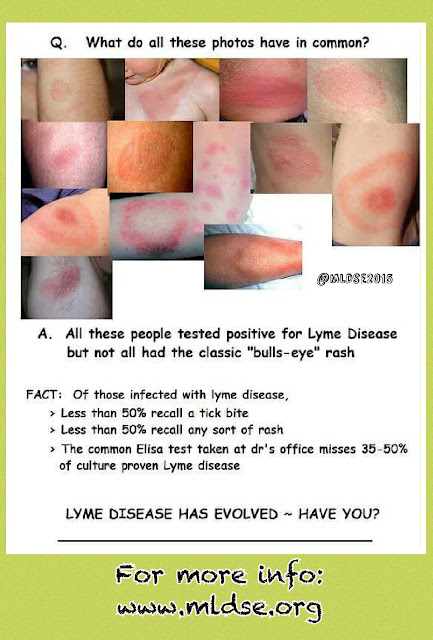Do Your Tick Checks!
Author: Paula Jackson Jones
Published: 04/07/2017
As the weather continues to warm, ticks are becoming more
and more active, eager to find their bloodmeal and we need to be vigilant with
our prevention against tick encounters. We’ve covered treating our skin and
clothing in preparation for time spent outdoors but it doesn’t end there. We
need to form habits to check for ticks once we come inside.
Because children ages 5-14 and adults over 64 make up the
highest category of “At-Risk” for new cases of Lyme and tick-borne disease, when
we come inside, we need to do our tick checks, we need to teach children how to
appropriately do tick checks and as care givers we need to check our seniors.
WHAT
IS A TICK CHECK? It’s a process of looking over your body
top to bottom for nymph and adult ticks that you may have unknowingly brought
inside with you. Ticks crawl from the
ground up looking for the perfect place to feed upon and they thrive on moist,
dark areas. The best way to do a tick check is to remove your clothing and then
check the following areas: Under the arms, in/around the ears, inside the belly
button, back of the knees, in your hair, between the legs/groin area and around
your waistline. Nymph ticks are no larger than a poppy seed and are often
missed. Use a mirror for hard to see places.
You can also shower using shampoos and body washes that contain
ingredients like rosemary, eucalyptus and tea tree oil that repels and washes
out any ticks you may have missed while checking your hair (Remember: tea tree oil
is not safe for pets). While you’re showing, toss your clothing into the dryer
for a minimum of 10 minutes on HIGH heat. Ticks cannot survive in dry
environments and this will remove and kill any ticks that may have latched onto
your clothing. Then you can wash your
clothing. DRYER FIRST, THEN WASH. If you have pre-treated your clothing with
Permethrin (which you can find at the local hardware stores), tossing them in
the dryer is just another safety layer of prevention to kill any ticks that
have made their way into your home.
As President of Midcoast
Lyme Disease Support & Education and a survivor of Late stage neurological
Lyme disease and four tick-borne co-infections (all from one tick), I have made it my personal
mission to raise awareness and educate about just how easy it is to have a tick
encounter and not even realize it. By treating your skin and clothing and doing
daily tick checks, you are taking charge and reducing your chances of being
exposed to a tick-borne disease.
~ Paula






Comments
Post a Comment